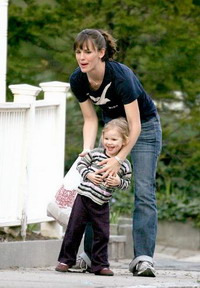Login form
Setting Boundaries
 When a child is small, we often use boundaries to protect them and keep them away from harm or danger. But it is important that you explain why boundaries are there - for instance, if you pull away from an open fire explain why.
When a child is small, we often use boundaries to protect them and keep them away from harm or danger. But it is important that you explain why boundaries are there - for instance, if you pull away from an open fire explain why.
When parents give orders, children often dig in their heels. One way to stop this happening is to let them know why something is important.
Boundaries are about setting the bottom line or making agreements about what is acceptable and what is not.
Boundaries work far better if they are made and agreed by everyone. When children see the sense of it, or know you've taken their opinions into account, they are more motivated to co-operate.
As children grow, most will test the limits - this is quite normal behaviour. When they become teenagers you may need to change or amend these boundaries to reflect different or new behaviours and experiences.
When you do this, involve your child so that you can negotiate the new boundaries together.
Too many boundaries can cause resentment and be impopssible to 'police'. Work out what is really important to you and what you could let go.
Rules can help you keep your child safe, but as they get older you will need to negotiate and let them take more reposnibilty for their own safety.
There may be times when your values conflict with the values that your children are learning from other people and the media. This may be when you find yourself negotiating.
Tips
- Remember that setting boundaries can sometimes make children feel safe when the world seems otherwise out of control.
- Occasionally giving children responsibility for their own safety is a good thing.
(Source: ParentlinePlus)

